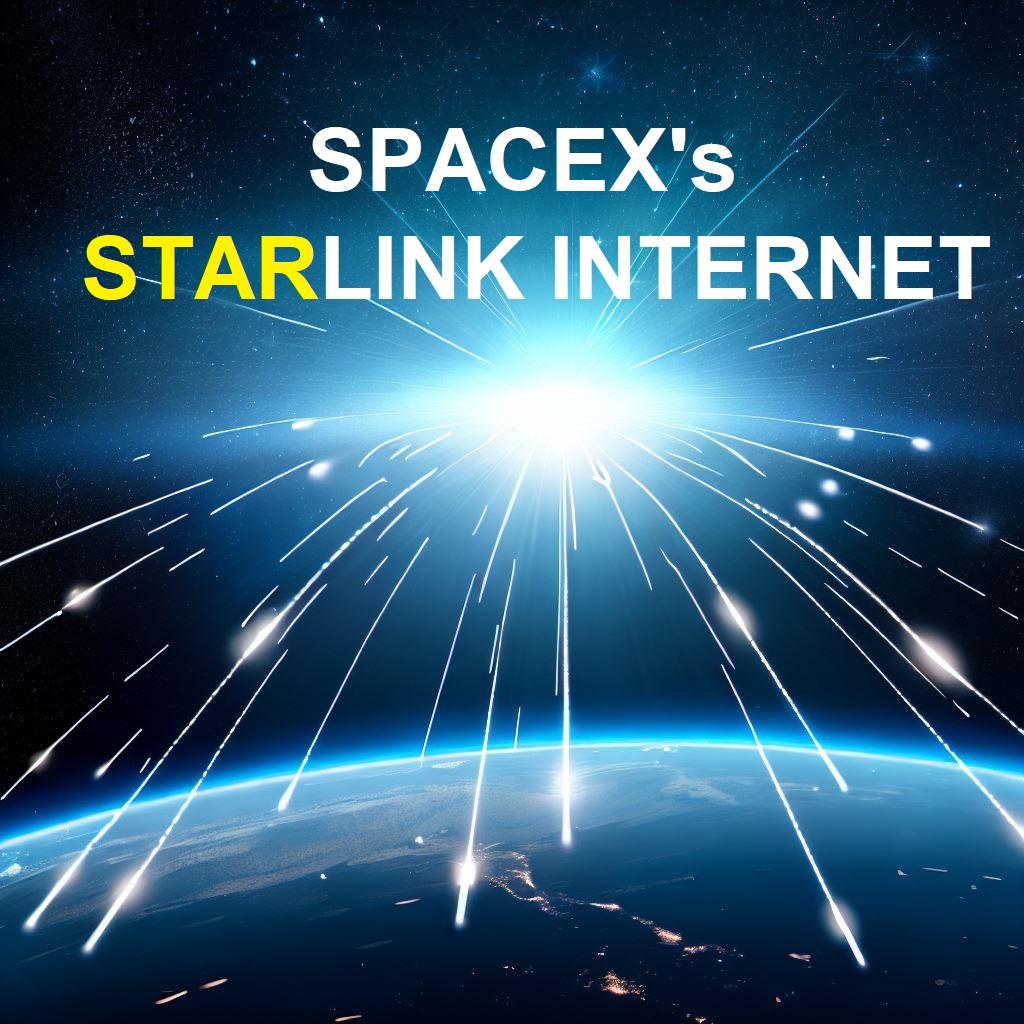The Rise of Starlink: SpaceX’s Satellite Internet Constellation
SpaceX has ambitious plans to launch thousands of satellites into low-Earth orbit to provide high-speed broadband internet access around the world. This nascent but rapidly growing satellite constellation is called Starlink.
Starlink’s goal is to beam internet connectivity to users anywhere on the planet, including remote rural locations that ground-based services struggle to reach profitably. As of 2022, over 2,000 Starlink satellites have been launched aboard SpaceX’s Falcon 9 rockets.
By employing a low-orbit placement at 550km altitude, Starlink satellites have an advantage over traditional geostationary options that orbit over 35,000km high with a slower connection lag time. Users can access Starlink internet with just a small terminal (incl. antenna dish) for a monthly subscription fee.
Speed tests have shown Starlink delivering average downlink speeds around 100Mbps even during beta testing. Latency is relatively low for a satellite network at around 30 milliseconds. This performance comes close to competing with cable internet on the ground.
However, scaling such a massive infrastructure brings technical challenges. Orbital debris, signal interference between satellites and connectivity in high-density areas requires ongoing work. Regulatory approval is also critical as signals cross international borders.
SpaceX ultimately hopes to deploy over 40,000 satellites to saturate global coverage. Early soft launches in select regions demonstrate strong demand exists for the service worldwide. Major financial backing and SpaceX’s proven reusability makes Starlink well positioned for long term success.
If the system can continue expanding while maintaining quality of service, Starlink has potential to become the leading internet provider everywhere conventional cables cannot reach – essentially connecting the whole planet at last. Only time will tell if SpaceX can pull off this audacious vision.
How does Starlink compare to other satellite internet providers in terms of speed and latency?
Here’s how Starlink compares to other major satellite internet providers in terms of speed and latency:
Speed:
- Starlink: 100 Mbps avg download speeds (currently beta testing, speeds to increase)
- Viasat: 30-100 Mbps plans depending on location
- HughesNet: 25 Mbps plans
Latency:
- Starlink: 20-40 ms latency (still improving as more satellites launch)
- Viasat: 600-950 ms latency
- HughesNet: 600-700 ms latency
Coverage:
- Starlink has global coverage goals, now offering service in over 30 countries
- Viasat and HughesNet mainly cover North America currently
Data Limits:
- Starlink: No data caps currently
- Viasat: Most plans have 15-25GB/month limits before throttling
- HughesNet: Data thresholds like 25GB then speeds reduced
Cost:
- Starlink: $110/month currently for just internet
- Viasat: $60-170/month depending on data and speeds
- HughesNet: $60-150/month depending on speeds and data
Starlink plans offer significantly higher speeds and lower latency than other satellite providers thanks to its much larger constellation of low-Earth orbit satellites. Global coverage is also a major advantage as it expands service.

Are there any limitations or drawbacks to using Starlink compared to other satellite internet providers?
- Obstruction issues – The signal requires a clear view of the sky so trees or structures could cause interruptions. It’s more obstruction-sensitive than traditional satellite internet.
- Equipment costs – Users need to purchase the Starlink dish and mounting tripod for $599 upfront, while HughesNet and Viasat equipment is free.
- Speed/connection variability – Speeds can fluctuate more than cable/fiber as satellites handoff signal. Weather events may also briefly impair connectivity.
- Data usage – While Starlink currently has no data caps, intensive use could eat up monthly bandwidth allotment on busy satellites.
- Satellite visibility – The connection may be intermittent in very remote high-latitude areas with few overhead satellites. It relies on multiple satellites for connectivity.
- Future pricing – Starlink is still in beta testing phase and eventual full prices once out of testing could be higher than initial pre-orders.
- Equipment portability – The Starlink kit is stationary once installed, so it doesn’t offer truly mobile internet for RVs, boats, etc like other satellite providers.
- Regulation dependence – Starlink must comply with ITU and national authorizations that could impact availability or performance in some countries.
it trades off peak performance in exchange for global accessibility, but also introduces new obstructions and variability factors compared to geostationary systems.
What are some examples of countries where Starlink’s availability or performance may be impacted?
Here are some examples of countries where Starlink’s availability or performance could potentially be impacted:
- China – Starlink would need Chinese regulatory approval to operate within the country, which may not be granted due to IT and security issues. Geopolitical tensions could also impair operations.
- Russia – Starlink has received pushback from Russian space officials concerned about unregulated satellites. Current tensions over Ukraine may pose future challenges.
- India – SpaceX’s request for authorization was denied since Starlink was non-compliant with licensing rules. Resolving regulatory issues will be key to serving India.
- Iran/North Korea – Access to Starlink in these countries may be restricted or interfered with by their authoritarian governments.
- Dense urban areas – Multi-path interference, structural blockages and greater satellite demand could degrade speeds in megacities compared to rural areas.
- Far North/South latitudes – Approval conditions may apply in parts of Canada, Alaska and Antarctica with fewer overhead satellites for visibility.
- Areas near the equator – Here the low-Earth orbit means satellites spend very brief periods in view, which could impact latency and uptime.
- Countries with net neutrality/data policies – International regulations around how data is routed/charged could curb Starlink usage models.
So national laws, politics and population densities pose some challenges, though remote/rural regions worldwide still have much to gain from global connectivity.
Starlink’s availability around the world in 2023:
North America:
- Near complete coverage of Canada and United States. May expand to more remote Alaskan/northern regions.
Europe:
- Full national services in UK, France, Germany, Belgium, Netherlands, Denmark.
- Partial rollouts starting in Italy, Spain, Portugal, Ireland, Switzerland, Austria, Poland and Scandinavia.
Latin America:
- Broader availability in Chile, Brazil, Mexico and parts of Argentina.
- Possible expansion to other large countries like Colombia, Peru and Uruguay pending approvals.
Asia/Pacific:
- Limited trials/pre-orders in Australia and New Zealand. Regulatory hurdles remain for wider Asia access.
- May start accessing remote parts of Russia/Central Asia if political tensions ease.
Middle East/Africa:
- Unlikely to see much direct service due to geopolitical complexities.
- Remote desert/island areas may gain connectivity where no other options exist.
Overall in 2023, Starlink is projected to cover most of North America, major parts of Europe, small portions of Latin America and Australasia – but authorization and satellite deployment ceiling will limit hugely populated/remote Asian and African availability for now. Expansion will rely heavily on the pace of new satellite launches and partnership deals signed.

